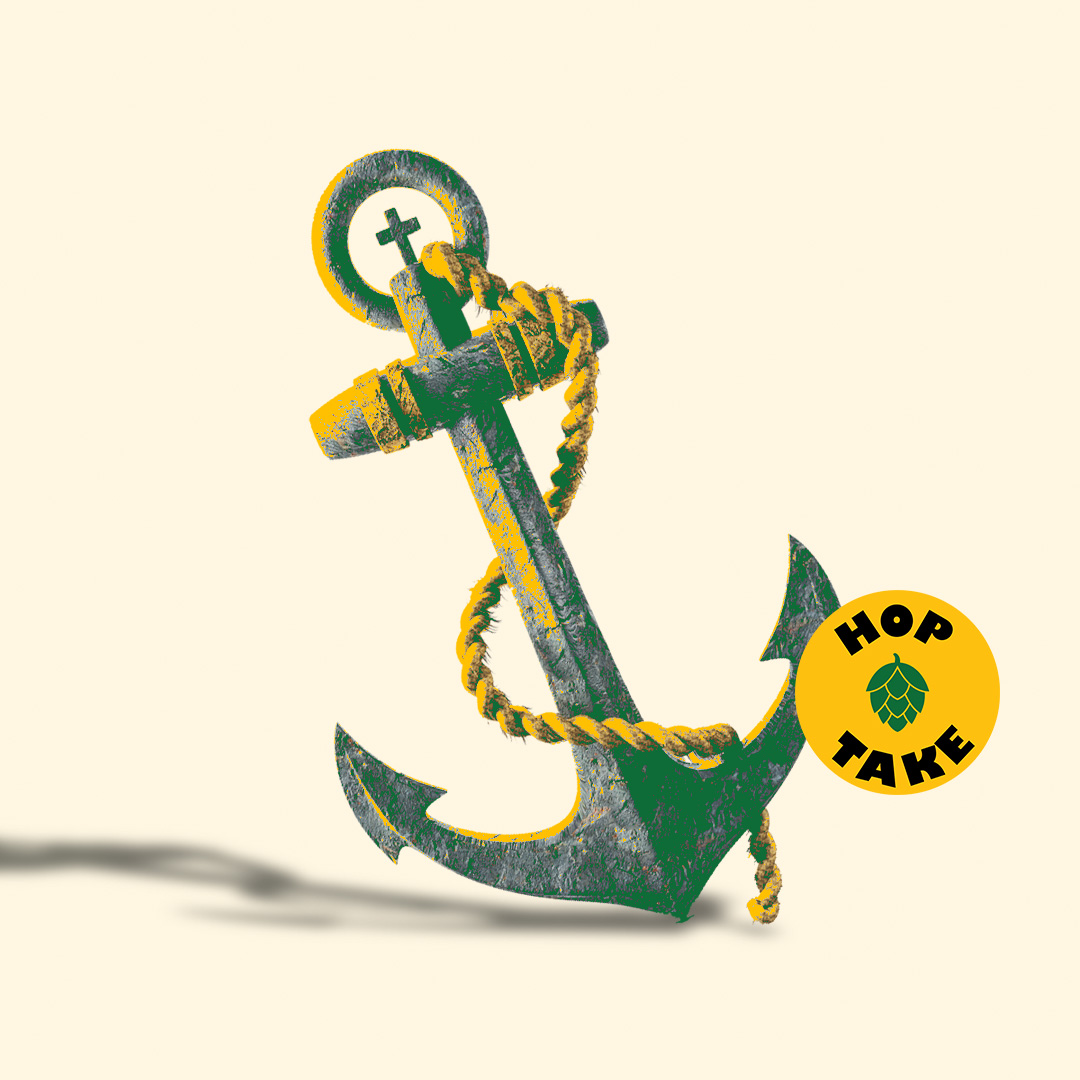The Closure Of Anchor Brewing Company: What Went Wrong?

Table of Contents
Shifting Market Dynamics and Increased Competition
The craft beer industry, once a landscape of small, independent brewers, has undergone significant consolidation in recent years. This shift in market dynamics played a crucial role in Anchor Brewing's demise.
The Rise of Craft Beer Conglomerates
The increasing acquisition of smaller craft breweries by larger corporations created a dramatically altered playing field. These mega-breweries possess significant economies of scale, allowing them to produce and distribute beer at a lower cost per unit than smaller, independent operations like Anchor.
- Examples of major brewery acquisitions: The acquisitions of numerous craft breweries by companies like Constellation Brands, AB InBev, and Boston Beer Company illustrate the trend towards consolidation. These acquisitions often stifle innovation and individuality in the acquired brands, favoring larger-scale production and distribution.
- The impact of economies of scale on smaller players: Smaller breweries struggle to compete on price with these larger players, limiting their ability to reach a wider market and maintain profitability.
- The difficulty for smaller brands to compete on price and distribution: The dominance of large distributors further complicates the distribution landscape for smaller independent breweries, making it challenging to secure shelf space and reach consumers.
Changing Consumer Preferences
The craft beer market is incredibly dynamic. Consumer preferences are constantly evolving, creating a challenging environment for established brands.
- The rise of IPAs and other specific craft beer styles: The explosive popularity of IPAs, particularly hazy and juicy IPAs, and other intensely-flavored styles has shifted consumer focus towards bolder, more experimental beers. Anchor Steam Beer, a more traditional steam beer, may have lost ground in this rapidly shifting landscape of more adventurous styles.
- Changing consumer demographics and their impact on beer consumption: The demographics of beer drinkers are also changing, with younger generations exhibiting diverse palates and preferences.
- The increased demand for unique and experimental brews: Consumers increasingly seek unique and experimental flavors, pushing breweries to constantly innovate and introduce new styles to stay relevant.
Internal Challenges and Strategic Decisions
Beyond external pressures, internal factors also contributed to Anchor Brewing's struggles.
Management and Ownership Changes
Anchor Brewing experienced several changes in ownership and management over the years. These shifts may have led to inconsistencies in strategic direction and a lack of cohesive long-term planning.
- Timeline of ownership changes: Tracking the various ownership changes reveals periods of significant strategic shifts, potentially impacting the brand's identity and market position.
- Key decisions made under different management: Different management teams may have prioritized different aspects of the business, leading to a lack of consistent brand messaging or a failure to adapt to market changes.
- Potential conflicts of interest or differing visions: Discrepancies in vision between management and ownership could have hindered effective decision-making and hindered the brewery's ability to respond to market pressures.
Marketing and Branding Strategies
Anchor Brewing's marketing and branding strategies might not have kept pace with the evolving craft beer market.
- Analysis of Anchor's marketing campaigns over time: Evaluating past marketing campaigns can reveal missed opportunities to engage younger demographics or emphasize the unique qualities of Anchor Steam Beer.
- Successes and failures in branding: An assessment of the overall branding strategy and its effectiveness in communicating the brand's values and identity to consumers is crucial.
- The effectiveness of their distribution network: A limited distribution network or an inability to adapt to changing distribution strategies could have hindered the brewery’s ability to reach potential customers.
Production and Innovation
Anchor's brewing practices and innovation in new beer styles may not have been sufficient to compete with the wave of new craft breweries constantly entering the market.
- Discussion of Anchor's brewing methods and their evolution: Assessing whether Anchor maintained its brewing innovation and adapted to changing consumer tastes is essential.
- Assessment of their innovation in new product development: The lack of significant innovation in new beer styles and offerings may have contributed to a decline in market share.
- Comparison to competitors' innovation strategies: Analyzing the innovation strategies of successful competitors can reveal areas where Anchor Brewing fell short.
The Broader Economic Context
Macroeconomic factors also played a role in Anchor Brewing's closure.
Rising Costs of Production
The cost of producing beer has increased significantly in recent years, squeezing profit margins for all breweries, but especially smaller ones.
- Details about rising costs of ingredients like barley and hops: Fluctuations in commodity prices, particularly for key ingredients like barley and hops, directly affect brewing costs.
- Increased labor costs and wages: Rising labor costs and the increasing difficulty in attracting and retaining skilled brewing staff impact profitability.
- Higher transportation and distribution fees: Increased fuel costs and transportation complexities add to the overall cost of getting beer to market.
The Impact of the Pandemic
The COVID-19 pandemic profoundly impacted the hospitality industry, including breweries heavily reliant on on-premise sales.
- The impact of lockdowns and restrictions on sales: Lockdowns and restrictions on bars and restaurants severely hampered on-premise sales for many breweries, including Anchor.
- The shift to off-premise consumption: The pandemic accelerated the shift towards off-premise consumption (grocery stores, liquor stores), requiring breweries to adapt their distribution and marketing strategies.
- The challenges of adapting to changing consumer behavior: The pandemic further disrupted consumer behavior, making it difficult for breweries to predict demand and manage inventory effectively.
Conclusion
The closure of Anchor Brewing is a complex story, highlighting the challenges facing even iconic brands in a dynamic and competitive craft beer market. A combination of shifting consumer preferences, internal strategic decisions, and broader economic factors likely contributed to its demise. The rise of craft beer conglomerates, increased competition, and the impact of the pandemic all played significant roles. The lessons from Anchor's closure are far-reaching, impacting the entire craft beer industry.
Call to Action: Understanding the factors that led to the closure of Anchor Brewing offers valuable lessons for other breweries and businesses. By analyzing the case of Anchor Brewing, we can learn from its mistakes and navigate the ever-evolving craft beer landscape more effectively. Learn more about the future of the craft beer industry and avoid the fate of Anchor Brewing by staying informed about market trends and adapting your strategies accordingly. The challenges faced by Anchor Brewing serve as a cautionary tale for any business operating in a rapidly changing market.

Featured Posts
-
 The Continuing Involvement Of European Shipyards In Russias Arctic Lng Trade
Apr 26, 2025
The Continuing Involvement Of European Shipyards In Russias Arctic Lng Trade
Apr 26, 2025 -
 Nintendos Action Forces Ryujinx Emulator Development To Cease
Apr 26, 2025
Nintendos Action Forces Ryujinx Emulator Development To Cease
Apr 26, 2025 -
 Are Nepotism Babies Taking Over Television
Apr 26, 2025
Are Nepotism Babies Taking Over Television
Apr 26, 2025 -
 American Battleground Challenging The Worlds Richest
Apr 26, 2025
American Battleground Challenging The Worlds Richest
Apr 26, 2025 -
 Hegseth And The Pentagon An Exclusive Look At Leaks Threats And Internal Battles
Apr 26, 2025
Hegseth And The Pentagon An Exclusive Look At Leaks Threats And Internal Battles
Apr 26, 2025
